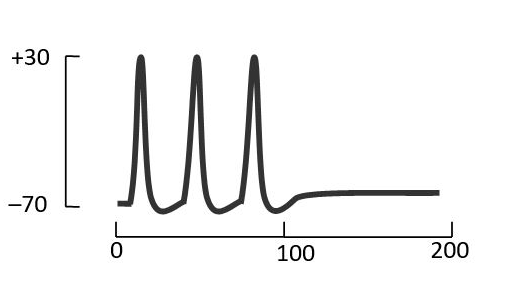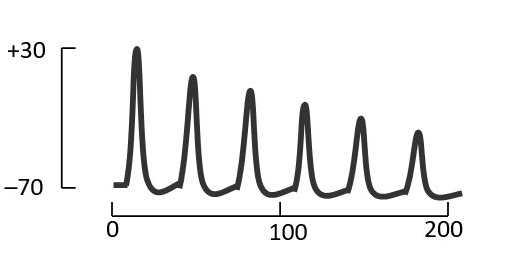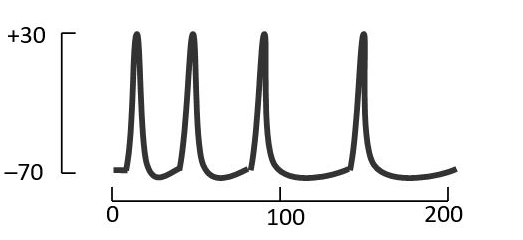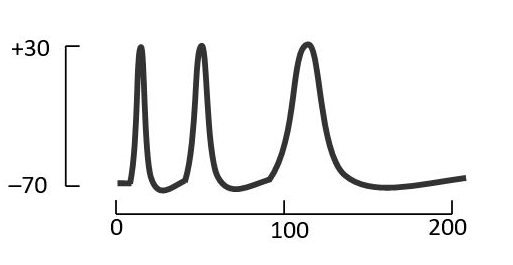Question 44
(Multiple Choice)
Which of the following better represents the process of adaptation mediated by the voltage-gated Ca²⁺ channels and Ca²⁺-activated K⁺ channels? The vertical axis in each graph is the membrane potential in the postsynaptic neuron (in millivolts), while the horizontal axis is the time of constant stimulation (in milliseconds).
A)

B)

C)

D)

E)

Answer